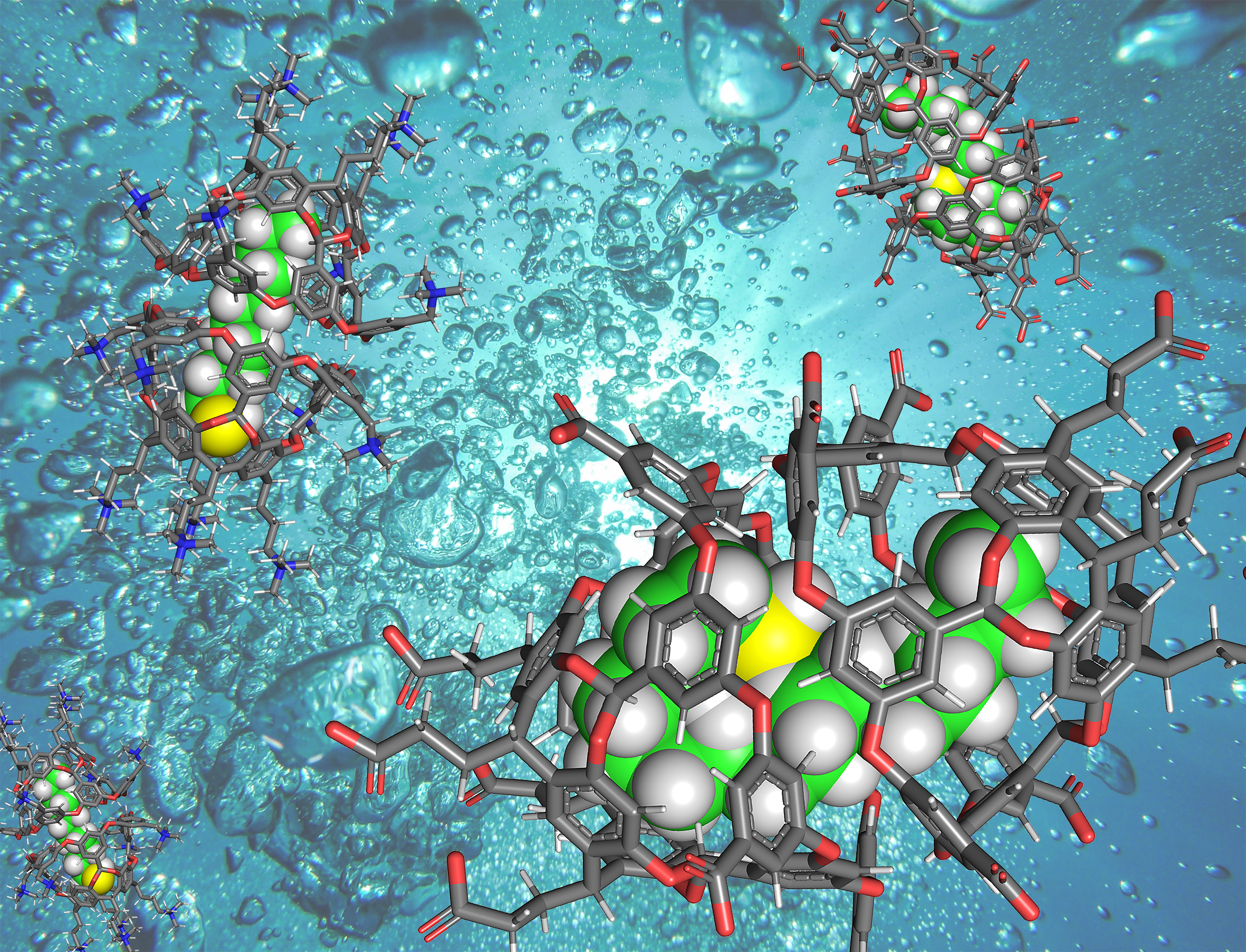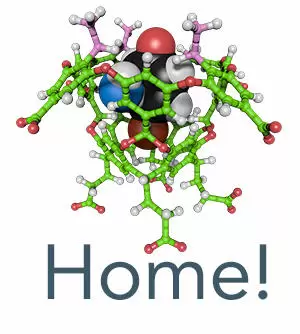 A major program of research in the group focuses on concave hosts that assemble around guest molecules to form nano-scale supramolecular capsules. Driven by the hydrophobic effect, the formation of these containers engenders a dry, inner-space quite distinct from the external aqueous environment. Synthesis plays a key part in this work. The hosts must be designed carefully so as to possess the requisite properties.
A major program of research in the group focuses on concave hosts that assemble around guest molecules to form nano-scale supramolecular capsules. Driven by the hydrophobic effect, the formation of these containers engenders a dry, inner-space quite distinct from the external aqueous environment. Synthesis plays a key part in this work. The hosts must be designed carefully so as to possess the requisite properties.
These supramolecular capsules are used as yoctoliter (10–24 L) reaction vessels to carry out chemical conversions that cannot normally be performed in water. Being of exceedingly small volume, entrapped guests are at high effective concentrations. Moreover, guests are influenced by both the electrostatic potential field of the water-solubilizing groups of the capsule, as well as their constant, intimate contacts with the walls of the capsule. All of these phenomena contribute to engender unusual guest reactivity.
Compartmentalization also leads to new strategies for the physical and/or kinetic separation of complex mixtures. Examples of the former include using aqueous solutions to separate hydrocarbon gases. Alternatively, the capsules can add a protection bias to any intrinsic difference in the reaction rates of latent guests and so bring about efficient kinetic resolutions.
In all of these endeavors, characterization of the cavitands and their assemblies requires an array of Nuclear Magnetic Resonance (NMR) spectroscopic techniques, including: 1H/13C, NOESY, COSY, EXSY, and PGSE/DOSY experiments. NMR also plays a primary role in monitoring the progress of reactions/separations under study.

